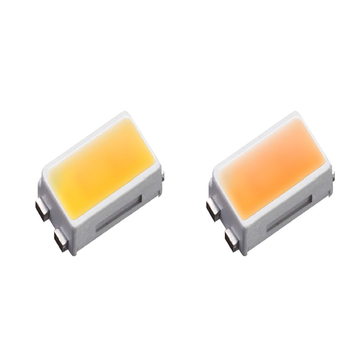Introduction:
When it comes to high-power LED chips, maintaining lumen output over time is a crucial consideration. Operating temperature and drive current are two well-known variables that significantly impact the long-term performance of these LEDs. In this article, we'll delve into the complex world of LED lumen maintenance, exploring the factors that influence it and the importance of understanding LED components.
Factors Influencing Lumen Maintenance:
Several key factors play a role in determining the lumen maintenance of high-power LED chips. These factors are interrelated, making the subject of LED lumen maintenance multifaceted. Some primary influencers include:
-
Silicone Lens Material: The choice of silicone material for the lens on the LED lamp is a critical factor. Different silicone compositions react differently to operating temperatures, which can affect their transparency. Higher temperatures can lead to a rapid degradation of the silicone, resulting in a loss of light output from the LED lamp.
-
LED Chip Materials and Fabrication Technology: The materials used in the LED chip and the fabrication technology employed are essential considerations. Variations in chip materials and manufacturing processes can impact lumen maintenance differently over time.
-
Phosphor Application: The type of phosphor used and its application method are also significant. Phosphors play a crucial role in converting LED chip emissions into visible light. Their stability under different operating conditions is vital for maintaining lumen output.
The Role of Silicone Encapsulants:
Silicone encapsulants provide a relevant example of degradation in LED components. These polyorganosiloxanes can be sensitive to operating temperatures. At higher temperatures, the transparency of silicone materials degrades, leading to an overall reduction in light output. Additionally, the photons emitted from the LED chip can damage the siloxane material, further decreasing its transparency and causing additional lumen depreciation. Consequently, higher drive currents, which result in more light emission from the chip, accelerate lumen depreciation. Moreover, higher drive currents elevate LED operating temperatures, compounding the issue.
Mid-Power LED Lamps:
Mid-power LED lamps, as illustrated in Figure 3, also use siloxanes as encapsulants. However, they are typically packaged in polyphthalamide (PPA) plastic polymers, which are even more sensitive to heat and photonic energy. Exposure to elevated temperatures and light causes PPAs to darken, resulting in rapid lumen depreciation. Therefore, mid-power LEDs are generally suitable for non-critical lighting applications where long-term lumen maintenance is not a primary concern.
Selecting the Right LED:
Understanding the construction of LED components and their sensitivities to operating conditions is essential when choosing the appropriate LED for a specific application. Long-term lumen maintenance is a critical factor to consider in ensuring the desired performance of LED lighting systems.
In conclusion, operating temperature, drive current, and material choices are among the critical factors influencing the long-term lumen maintenance of high-power LED chips. A comprehensive understanding of these factors is vital in making informed decisions about LED selection for various applications.


0 comments